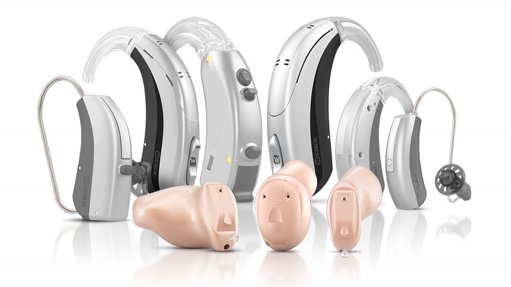
BETTER TO HEAR YOU There are a variety of hearing devices with a variety of technological features
The advancement of technology in South Africa has enabled audiologists to treat patients in remote regions and has allowed for the increased mobility of audiologists, says speech and hearing practice NK Speech and Audio founder and chief speech therapist and audiologist Nabeelah Kathrada-Seedat.
“South Africa has also made great developmental strides in the technology for audiology. With the development of applications and cloud-based systems, audiologists are able to expand services efficiently to outlying regions of the country that were not easily accessible previously.”
This is beneficial in the audiometric testing of people in factories and in the mining industry, Kathrada-Seedat states.
Specially engineered diagnostic technology is particularly beneficial, as it is essential to have specialised tools to administer assessments on patients.
Kathrada-Seedat notes that these tools, instruments and assessments provide essential information on the anatomical hearing functions of patients and enable audiologists to test patients objectively.
Further, she mentions that several different tools are used to assess different areas of the hearing system such as the outer, middle and inner ear. Such tools focus on hearing, balance and auditory processing.
Moreover, with the advancement of technology, there are better diagnostic outcomes, which, in turn, lead to enhanced assistance for patients.
Additionally, Kathrada-Seedat explains that the hardware of hearing aids and cochlear implants are mostly the same, with the exception of ear moulds, which are made specifically for each patient. There are, however, a variety of companies that manufacture hearing devices in different styles, models and with a variety of technological features.
The mould is made by measuring the patient’s outer ear and ear canal and this is then attached to a specific type of hearing aid, depending on the patient’s need.
The software – the programming used in assistive hearing devices and designed to assist in the specific hearing loss of a patient – is also patient-specific.
Meanwhile, Kathrada-Seedat says there has been an increase in hearing assistive technology in recent years. This technology encompasses a range of wireless or frequency modulation and audio distribution systems.
“This technology, which is similar to a public address system, allows for information to be sent directly to each wearer’s device. This is particularly beneficial in a classroom setting, which can enable children who are deaf or hard of hearing to tune out ambient noises and focus their attention on the most important auditory information,” she concludes.